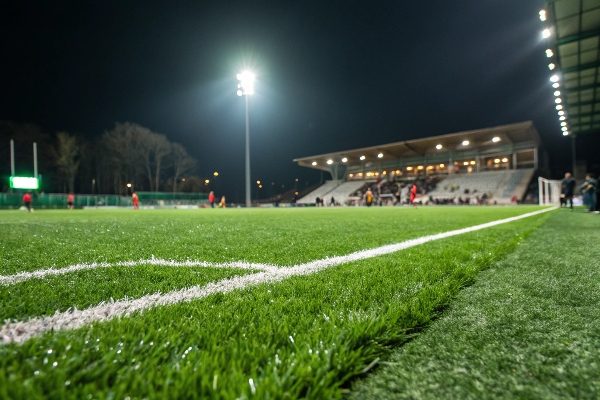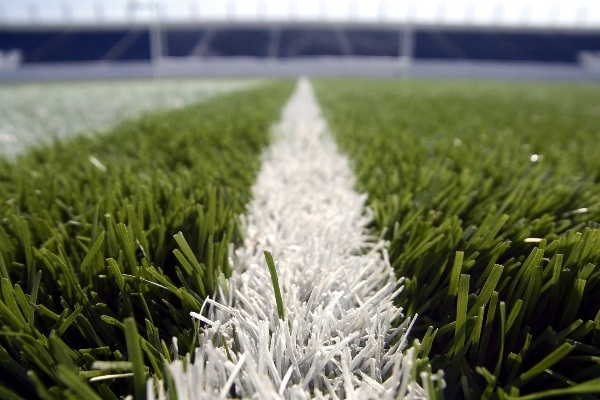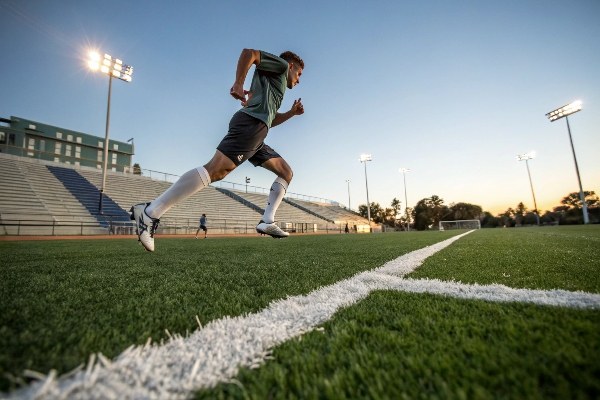Choosing the right turf for a football field can be confusing. Making the wrong choice can lead to poor performance, unhappy players, and even injuries. Let me help you understand the options.
The best artificial turf for football depends on the field’s use. For professional or large community fields, a 40-60mm pile height turf with sand and rubber infill is best. For smaller, recreational fields, a 30-40mm non-infill turf is a great, easy-to-install option.

There’s more to it than just picking a grass length. The specific details of the turf system are what make a field great or just average. To really make the right choice for your project, you need to understand the key features that define a quality football pitch. It’s the difference between a field that lasts for years and one that needs replacing too soon. Let’s break down what you need to know to ensure you’re getting the best value and performance.
What Key Features Should Synthetic Turf for Football Have?
It’s hard to tell good turf from bad just by looking. Choosing based on price or appearance alone can lead to a field that wears out fast and doesn’t play well.
Key features for football turf include a pile height of 40-60mm, high Dtex for durability, optimal stitch density for resilience, and a yarn shape designed for performance. These factors together create a surface that is safe, durable, and provides excellent playability for football.

When I first started as an engineer in the turf workshop, I learned that every single detail matters. The specifications aren’t just numbers on a sheet; they directly impact how the field plays and how long it lasts. For my clients, understanding these details is the first step to a successful project. Let’s look at the most important ones.
Key Specifications Explained
The performance of a football field comes down to a few core technical specs. Getting these right is crucial.
| Feature | What It Is | Why It Matters for Football |
|---|---|---|
| Pile Height | The length of the grass blades. | 40-60mm is ideal. It provides enough room for the right amount of infill, which gives the field its cushioning and stability. |
| Dtex | The weight of the yarn per 10,000 meters. | A higher Dtex (e.g., 12,000-16,000) means a thicker, more durable yarn. It can withstand heavy use without splitting or breaking down quickly. |
| Stitch Density | The number of stitches per square meter. | Higher density means more yarn, which leads to better grass coverage, increased resilience, and a longer lifespan for the field. |
| Yarn Shape | The cross-section shape of the grass blade (e.g., Spine, S, Diamond). | A "spine" or "stem" shape helps the grass blades stand upright better, which improves ball roll and gives the field a more natural look. |
Choosing the right combination of these features ensures your field meets the demands of constant play.
How Does Turf Quality Affect Player Performance and Safety?
Trying to save money with low-quality turf seems attractive at first. But a cheap field can increase the risk of player injuries and lead to a poor playing experience.
High-quality turf directly improves safety and performance. Its superior shock absorption, thanks to proper infill and optional shock pads, reduces joint impact and injuries. A well-made surface also ensures consistent ball roll and reliable footing, allowing players to perform at their best.

I’ve seen projects where clients tried to cut costs by using cheaper turf or less infill. The result is almost always the same: complaints from players and a field that degrades quickly. Player safety should always be the top priority. A quality turf system isn’t just a playing surface; it’s a piece of safety equipment. The initial investment pays off through fewer injuries and a better reputation for your facility. Think about how the surface interacts with both the ball and the players.
The Impact on Players and the Game
A football pitch is a dynamic environment. The turf must perform consistently under all conditions.
-
Shock Absorption and Safety1: The combination of long turf fibers (40-60mm) and infill (quartz sand and rubber granules) is critical. The infill provides cushioning when players fall and reduces the impact on their joints when running and jumping. For an even higher level of safety, especially for professional or school fields, I always recommend installing a shock pad underneath the turf. This foam layer provides excellent shock absorption, significantly lowering the risk of concussions and sprains.
-
Performance and Playability2: Quality turf ensures a predictable game. The ball rolls smoothly without bouncing unexpectedly. The surface provides stable footing, so players can cut, turn, and sprint with confidence. A cheap, low-density turf can become flat and hard, causing the ball to skid too fast and increasing the risk of players slipping. A good field allows the game to be about skill, not about fighting the surface.
Why Choose a Direct Manufacturer for Your Football Pitch Projects?
Finding a trustworthy supplier for artificial turf can be a real challenge. Working with traders or middlemen often leads to higher prices, communication problems, and project delays.
Choosing a direct manufacturer like QH grass guarantees stable quality, competitive prices, and expert advice. You get rid of the middleman, which means better communication, control over your product, and a partner who understands your project’s technical needs from start to finish.

I’ve worked on both the technical and sales sides of this industry. I know the frustration my clients like Michael and David feel when they can’t get a straight answer or when a shipment is delayed. This is why we built QH grass with a direct-to-customer model. When you talk to us, you are talking to the people who are actually making your turf. We can answer your technical questions, provide quality assurances, and ensure your project stays on schedule and on budget. This direct relationship is the key to achieving greater success.
Advantages of a Manufacturing Partner
Working directly with the factory floor provides powerful benefits that help your business grow.
-
Price and Quality Control: As a manufacturer, we manage the entire production process. We select the raw materials, run the tufting and coating machines, and conduct quality checks at every stage. This absolute control means we can guarantee stable quality in every roll. It also means you get a competitive price because there are no trading company markups. You get more value for your investment.
-
Expert Guidance: My background is in turf engineering. I’m not just a salesperson; I understand the technical details. I can help you choose the perfect turf for your specific needs, whether it’s a FIFA Quality Pro system or a durable, budget-friendly field for a local community. We can even customize products to meet your project’s exact requirements.
-
Reliability and Communication: One of the biggest pain points for buyers is poor communication leading to delays. By working with us directly, you avoid that. You have a direct line to our team, which minimizes misunderstandings and ensures we can solve any issues quickly. This means your projects are completed on time, every time.
Conclusion
Choosing the right football turf and a direct manufacturer is crucial. This partnership ensures player safety, top performance, and the overall success and profitability of your project.
_画板-1.png)
_画板-1.png)